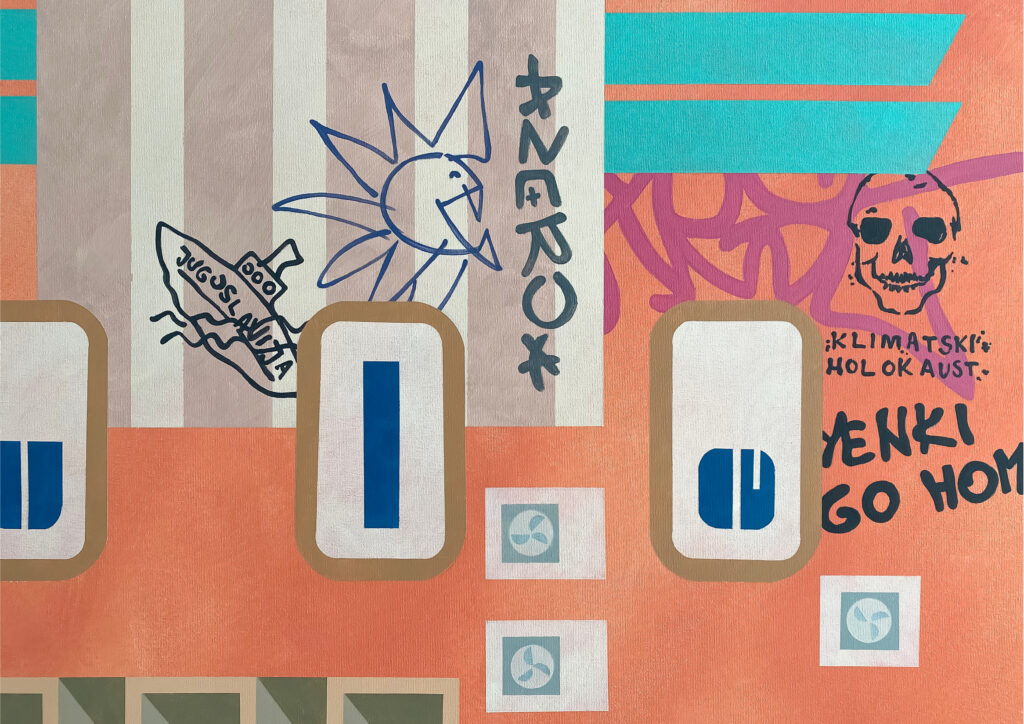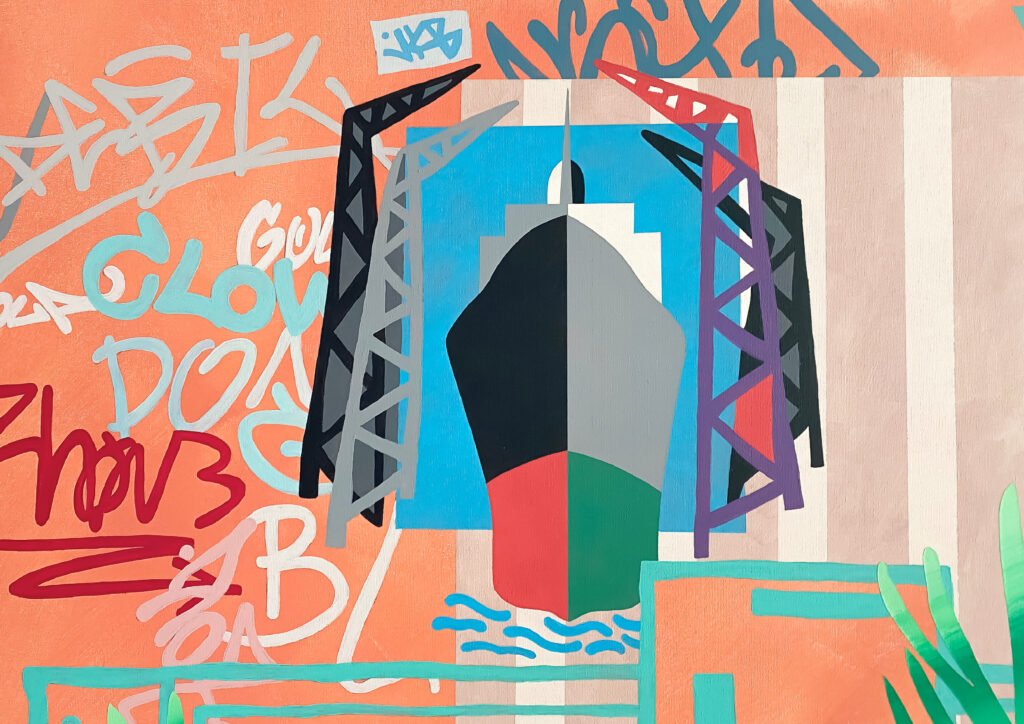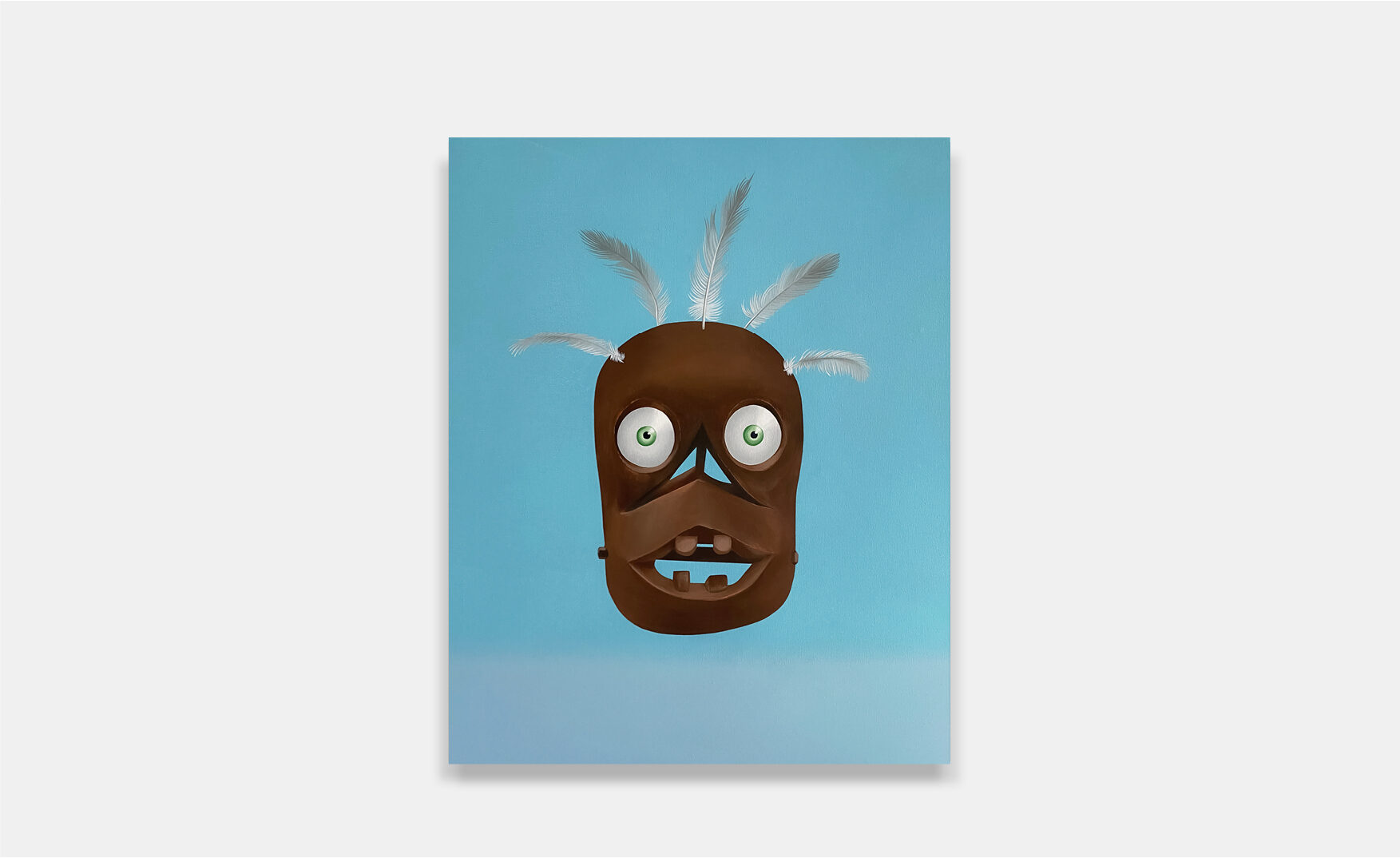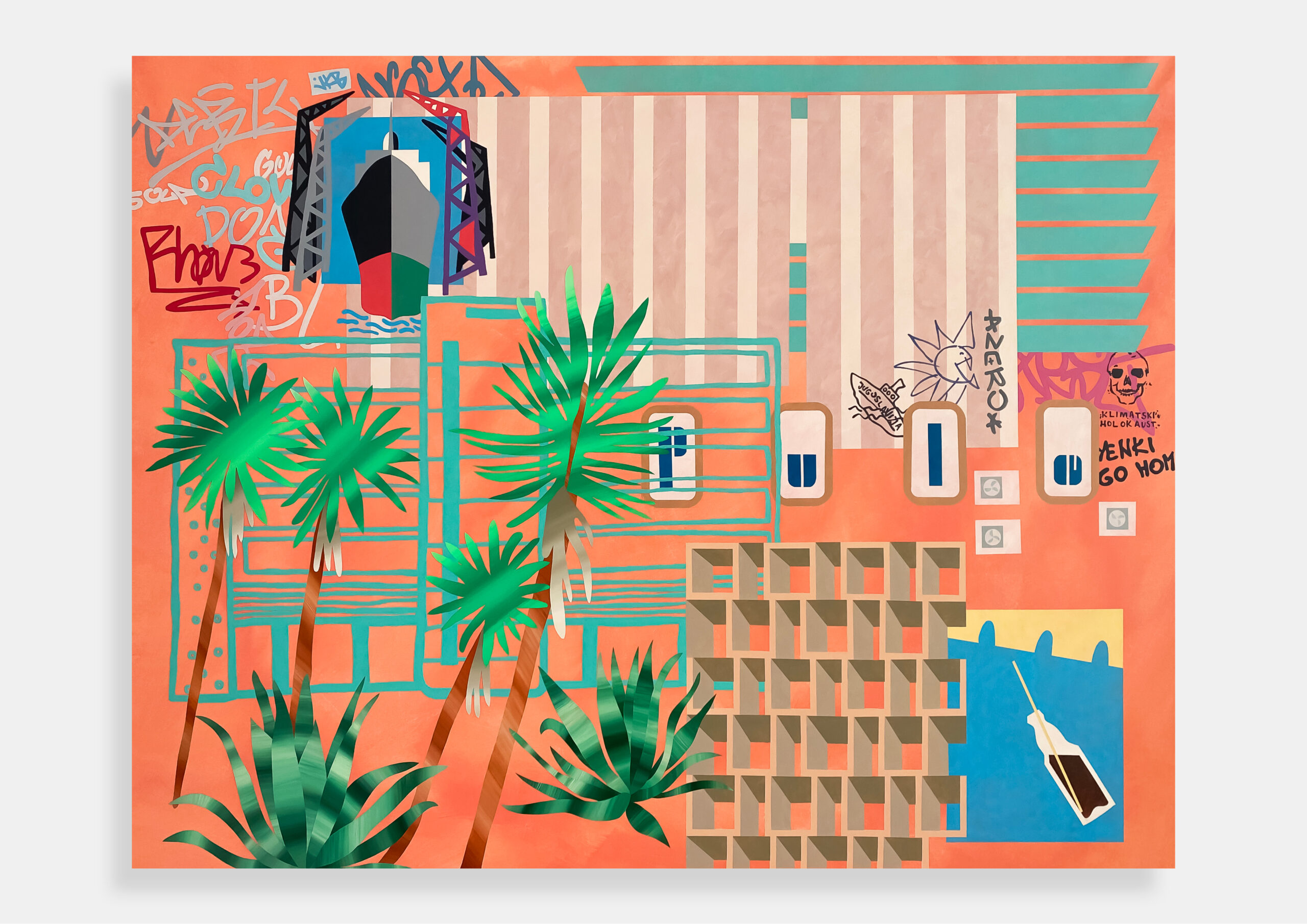Barbaric protopia – If it’s been done before, perhaps we can do it again 2022 – Acrylic on canvas – 123 x 160 cm


“The synchronization of economic and cultural globalization of aesthetics is a central theme in the work of Brazilian artist Fernanda Figueiredo. Starting from her own biography and thus from the influence o Bauhaus Modernism on contemporary Brazilian culture after 1945, Figueiredo deals with analogous themes in other cultures. The almost blind faith in progress, prosperity, and modernization is evident not only in the numerous futuristic buildings from the Italo-Fascist period, but also in the pioneering Yugoslav architecture found in Pula and Rijeka. These buildings, erected during the Tito era and in many cases now in poor condition, are a reminder that architecture once had a broader responsibility in shaping society. When Figueiredo deals with this loss in a group of paintings created especially for the 4th Industrial Art Biennial, she gives new relevance to the theme. Her message: It is important to return in the future to the quality of these urbanistic settings.” –Christoph Doswald, Pula, 2023
Project presented at the 4th INDUSTRIAL ART BIENNIAL – Landscapes of Desire, 2023
Curated by Christoph Doswald & Paolo Bianchi
Pula, Raša, Labin, Rijeka – Croatia
This work is about the sense that Modern Architecture had in its imagination social and political change, but over time came the nostalgia for past achievements and a feeling of frustration. Just like Modern Architecture in Brazil, the project of socialist Yugoslavia was a utopian project, playing architecture a decisive role in the goal of projecting a better future for the society. That future, however, never materialized.
The architecture reflects this former idea of the future, while the surfaces and layers of human interventions reveal the reality of its current conditions. These places still irradiate utopia, but with contradictions in their context and our own.
The title then proposes an ambivalent perspective. On the one hand, optimistic, since we always have the chance to be utopian and try it again. I believe that Modern Architecture continues to fascinate because it serves as a reminder that imagining different politics and society are possible. At the same time, its sad decay speaks to the ultimate failure of this project, while cyclic authoritarianism and nationalism resurge in many places that experienced utopian Modernism.
The work comprises seven paintings on canvases. I designed four small ones using as references Yugoslavian pavilions built at world fairs of technology, art, and modern lifestyle: Milan, 1931 / Paris, 1937 / Brussels, 1958 / Montreal, 1967. The influence of these Modern Yugoslavian pavilions on eastern and western architecture was substantial, and they are internationally considered a reference in innovation and uniqueness.
The larger paintings are composed using references I gathered in Labin, Raša, Rijeka, and Pula during my research period: modern architecture, vintage advertisement posters, graffiti, native vegetation, and landscaping to create friction between dystopian and utopian elements.

